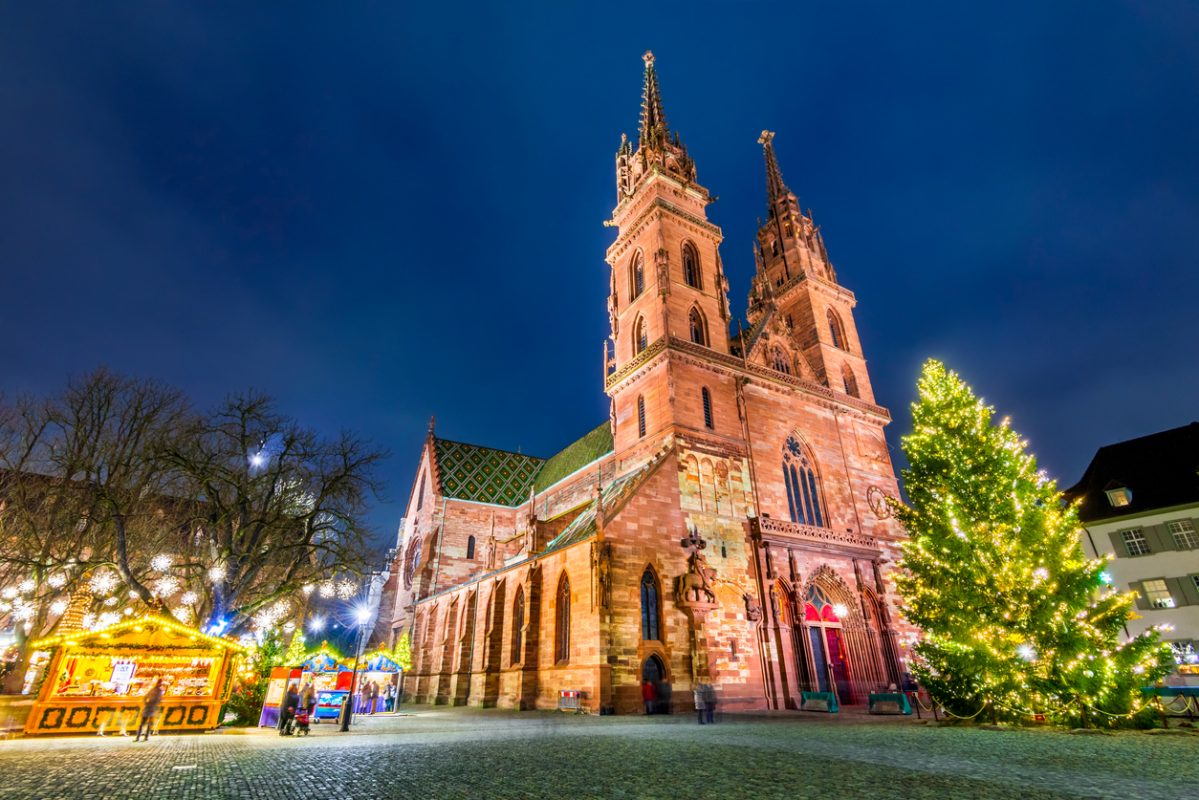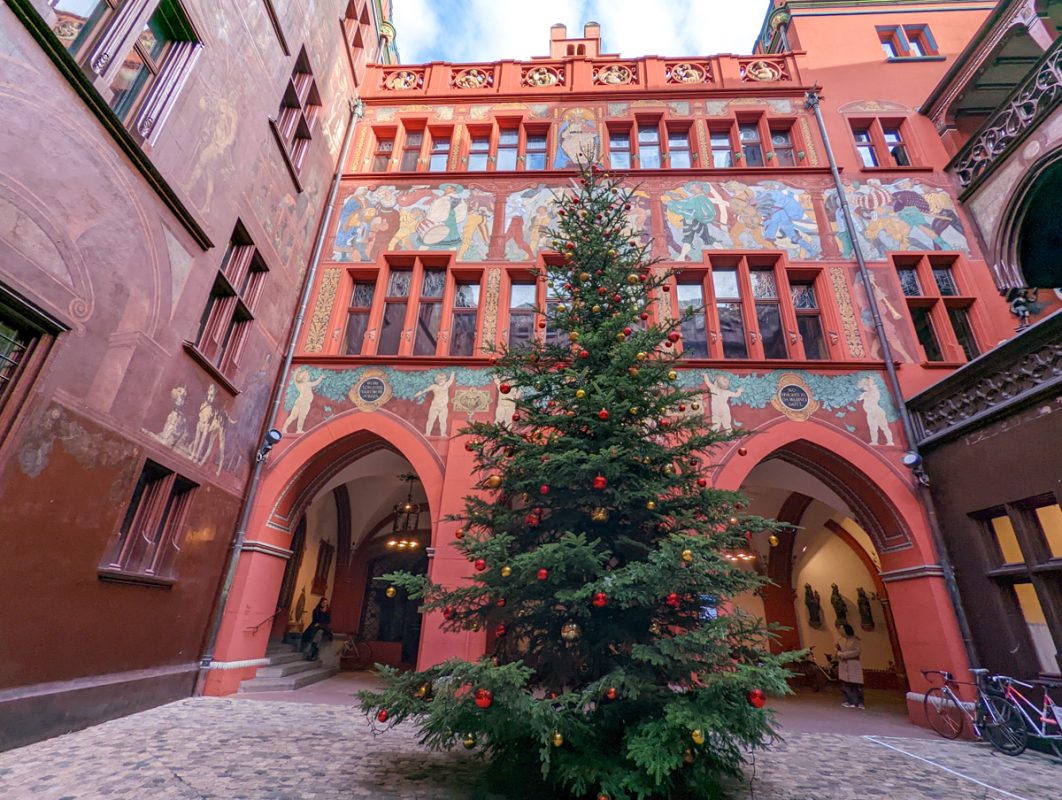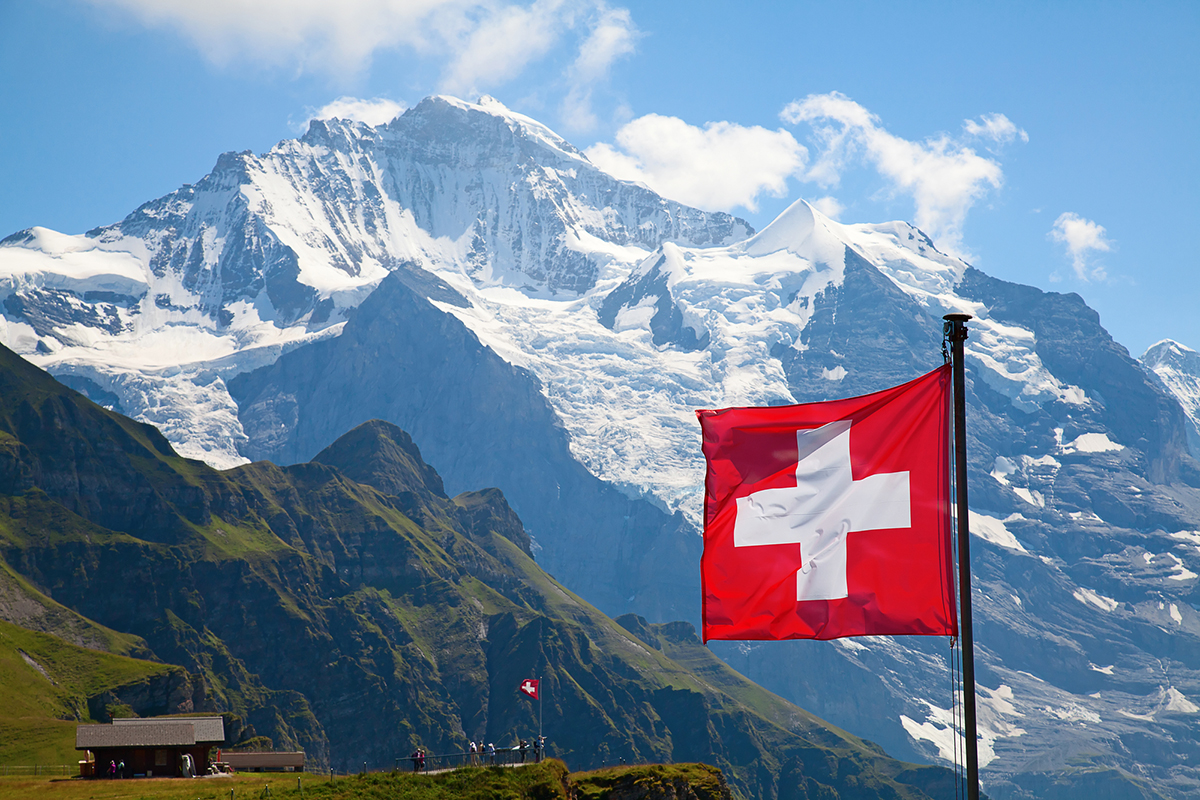When does it snow in Switzerland? Can you expect snow all over the country or just in the mountains? We delve into it all in this blog post!
There are few countries known for their snow as much as Switzerland.
Conjure up an image of Switzerland in your mind, and I bet you’re thinking of the craggy Alps plummeting down into serene lakes (she’s definitely a beauty!).
So to answer the question “does it snow in Switzerland” – yes it does.
However, when and where it snows in Switzerland is a bit more complicated.
I’ve travelled around Switzerland a few times – one of my best friends lives in Basel – and I’ve always been fascinated by snowfall in this Alpine nation.
So, here’s my full explanation into why, when and where you can expect snow in Switzerland!
Does it snow in Switzerland?
Yes, it does snow in Switzerland in the winter months.
The Alps and other mountainous regions often see snowfall from October to April, while lower areas may get snow during the coldest winter months.
But, snow’s not guaranteed everywhere – for example, it only happens on the coldest winter days in the city of Basel.
When does it snow in Switzerland?

Switzerland’s distinct regions, from the Alps to the lower valleys, experience varying degrees of snow throughout the year.
Let’s take a look at the month-by-month snowfall of the whole country to give you a better picture.
Does it snow in Switzerland in October?
October marks the beginning of the snowy season in the higher elevations of the Swiss Alps.
While most cities and lowlands remain free of snow, mountainous areas may start to see light dustings, especially towards the end of the month.
Does it snow in Switzerland in November?
November sees a more widespread snowfall, as the temperature drops and winter begins to take hold.
The ski resorts start to open toward the end of the month.
But places like Basel typically don’t see snowfall this early in the season.
Does it snow in Switzerland in December?
In December, snow becomes more commonplace throughout the country.
The Christmas markets come alive with festive flair, and cities like Zurich and Geneva may receive their first snowfall.
Does it snow in Switzerland in January?
January is a peak month for snow across Switzerland, particularly in the Alps – it’s one of the best places to visit in Europe in January for this reason.
The ski resorts are in full swing, and the mountain landscapes are often covered in deep, fresh snow, offering ideal conditions for winter activities.
There’s often snow even in the lower areas of Switzerland, too.
Does it snow in Switzerland in February?
February is characterized by persistent snowfall in the mountains and occasional snow in the lower regions.
It’s a popular month for skiing and snowboarding.
Does it snow in Switzerland in March?
March sees a gradual decrease in snowfall, but the ski slopes remain well-groomed.
Lower elevations may begin to thaw, giving way to the first hints of spring!
Does it snow in Switzerland in April?
April’s warmer temperatures bring a decline in snowfall, particularly in the cities and valleys.
However, late-season skiing is still possible in higher elevations.
Does it snow in Switzerland in the summer?
Summer in Switzerland typically means a break from snow in most parts of the country – in Basel and Zurich, it often gets to 30°C in the warmer months.
That being said, some higher-altitude locations like the Jungfrau region and glaciers may still have patches of snow throughout the year.
Does Switzerland have snow all year?
While the majority of Switzerland experiences a seasonal variation in snowfall, some high-altitude regions and glacial areas may retain snow throughout the year.
If you’re visiting Europe in the warmer months and really want to see snow, head to one of these spots!
Why does it snow in Switzerland?

Switzerland is endowed with an array of landscapes that play a vital role in determining the patterns and occurrences of snow.
Here’s what contributes to Switzerland’s stunning snow-capped peaks and winter activities.
Geography
The Swiss Alps, which cover a significant portion of the country, act as a natural barrier affecting weather patterns.
Higher altitudes have cooler temperatures, leading to consistent snowfall in the winter months.
As the Swiss Alps are very high, some peaks are still snowy in the summer!
Climatic zones
Switzerland’s climate is categorized into various zones, ranging from the temperate lowlands to the alpine climate in the mountains.
These diverse climatic conditions mean that while some areas might experience mild winters with little to no snow, others, particularly in the Alps, receive heavy snowfall that lasts through the season.
Human-Induced Factors
Lastly, you’ll always find snow in Swiss ski resorts in the winter months – because if it doesn’t fall naturally, people will make it!
Resorts with snow-making machines ensure a consistent supply of snow for winter sports.
Where does it snow in Switzerland?
Switzerland’s diverse geography means varied snowfall across different regions.
While the majestic Alps are synonymous with heavy snow, other parts of the country have their own unique snowfall characteristics.
Here’s a look into the four main areas of Switzerland:
Northwestern Switzerland

Northwestern Switzerland, including Basel and Aargau, has a mild winter climate.
Snowfall in this region is typically lighter and less frequent.
However, it does occur sporadically throughout winter.
If you’re craving more reliable snow conditions, head to the nearby Jura Mountains!
Eastern Switzerland
Eastern Switzerland, including areas like St. Gallen and Graubünden, is known for its impressive Alpine landscapes.
The region receives substantial snowfall, especially at higher elevations.
Ski resorts in Graubünden are famous for their reliable snow, providing ample opportunities for winter sports and activities.
Zürich
The Canton of Zürich enjoys a more moderate climate compared to the high Alps.
The city itself sees occasional snowfall during winter.
Surrounding areas and higher elevations may receive more consistent snow.
Central Switzerland
Central Switzerland, encompassing areas like Lucerne and Zug, experiences varied snowfall depending on the location.
While the lowlands may see sporadic snow, the mountainous regions are a haven for snow enthusiasts.
Resorts in this region are renowned for their breathtaking views and excellent skiing conditions.
Skiing in Switzerland

Switzerland has long been a favourite destination for skiers and snowboarders.
From beginners to seasoned professionals, the Swiss ski slopes offer something for everyone!
The following resorts are some of the most renowned destinations for skiing in Switzerland:
Zermatt
Situated in the shadow of the Matterhorn, one of Switzerland’s most iconic peaks, Zermatt boasts epic views and pristine slopes.
The resort has an extensive network of pistes, catering to all skill levels. The village is pretty charming too!
St. Moritz
St. Moritz is synonymous with luxury and elegance, offering a skiing experience that blends top-notch facilities with stunning natural beauty.
The resort’s known for its high-end shopping and dining, but has incredible slopes too!
Verbier
Famous for its challenging terrain and vibrant après-ski scene, Verbier’s perfect if you’re an adventurous skiier.
Its extensive network of off-piste runs makes it a haven for free riders, and the lively atmosphere continues long after the sun goes down.
Davos
Davos, together with its neighbouring resort Klosters, is a popular destination for families.
Offering a wide variety of runs and activities beyond skiing, Davos is a well-rounded, comfortable resort.
What’s Switzerland Like in the Snow?
The Swiss are pretty used to snow (unlike us in England!) and locals and travellers alike love the festive atmosphere that the white stuff brings!
Snow in Switzerland is a common occurrence, and daily life continues with a sense of normalcy even when the flakes are falling.
The Swiss are well-prepared for winter conditions, and cities and towns are equipped with efficient snow removal services to keep roads and walkways clear.
Public transport typically runs smoothly, though there might be occasional delays.
Outdoor cafés often stay open; here you can sip hot cocoa or mulled wine beside outdoor heaters or fire pits!
Shopping streets become adorned with festive lights and decorations.
Schools, offices, and businesses generally remain open in all but the heaviest snowfall!
Climate Change and Snowfall in Switzerland

Climate change is a global concern, particularly in countries like Switzerland.
If snowfall slows in Switzerland, it could significantly affect the country in more than one way.
Current trends
In recent years, Switzerland has witnessed a change in snowfall patterns.
Winters are tending to start later and end earlier, and snow is becoming less predictable.
Lower altitudes are experiencing decreased snowfall, with some areas struggling to maintain consistent snow cover throughout the winter season (hence the snow-making machines!).
Impact on glaciers
Switzerland’s famous glaciers are showing signs of retreat.
This melting is not only affecting the visual landscape but also has potential long-term consequences on water resources.
Glaciers serve as natural reservoirs, and their decline may lead to changes in the availability of freshwater in summer.
Future predictions
Climate models for Switzerland forecast a continued decrease in snowfall at lower elevations.
By the end of the century, some predictions suggest that snow may become a rare occurrence in areas below 1,200 meters.
Winters are expected to become milder, with more precipitation falling as rain rather than snow.
Economic implications
These changes in snowfall patterns have potential economic ramifications, particularly for the ski industry.
Resorts at lower elevations may find it more challenging to sustain their operations.
Investments in artificial snowmaking are becoming more common, but they also raise questions about sustainability and environmental impact.
Environmental considerations
The shift from snow to rain in winter months may also lead to changes in ecosystems.
The timing and amount of snowmelt influence rivers and lakes, affecting both flora and fauna.
Understanding and adapting to these changes is crucial for maintaining Switzerland’s rich biodiversity.
It’s hard to know what best to do about all of this!
Climate change is very real, but as individual people, there’s not a huge amount we can do – although I think it’s important to do what we can.
Personally, I avoid flying where possible and eat a mainly plant-based diet.
Here are some more things you can do about climate change.
Tips for Visiting Switzerland in the Snow

Here are some practical insights to help you make the most of your Swiss winter experience.
Safety First
Winter in Switzerland can be unpredictable, so do stay updated with local weather forecasts and heed advisories.
If you’re in the mountains, chat with locals to get the best idea of what the snow conditions are like (and any potential risks).
Pack proper clothing and gear
Trust me, you don’t want to get cold in Switzerland’s winter!
Pack layers, with waterproof and windproof stuff on top.
And don’t forget quality footwear with a solid grip for those icy streets.
Planning on skiing or snowboarding?
Make sure you’ve got all your gear, or at least know where to rent it.
Transport
Trains, buses and trams all work well in Switzerland in winter.
Just give yourself a bit of extra time if the snow is really coming down.
If you want to rent a car, get familiar with the winter driving rules and make sure those snow tires or chains are ready.
Embracing the Season
Part of the charm of Swiss snow is the plethora of winter activities that are on offer.
From skiing and snowboarding to ice skating and sledging, Switzerland offers an endless array of snow sports.
Fancy something a bit more unique? Go dining in an igloo restaurant, bathe in a thermal spa surrounded by snow-clad mountains or take The Glacier Express train ride through snow-laden valleys!
Health Precautions
That dry, cold air can be tough on the skin.
Keep a good moisturizer handy, and don’t forget to drink up.
And yes, you’ll need sunscreen, even in winter – that sun bouncing off the snow is no joke, especially up high!
Now You Know About Switzerland in the Snow!
From that first dusting in October to a full-on winter wonderland in December and January, Switzerland certainly does snow!
Whether you’re tearing it up on the slopes or just soaking in the snowy vibes in town, there are plenty of ways to enjoy snow in Switzerland.

